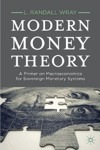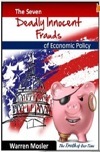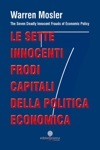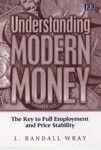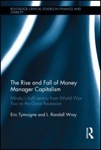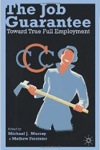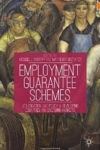“First Published on New Deal 2.0“
Tom Frank’s book: The Wrecking Crew explains how the Bush administration destroyed effective government and damaged our social fabric and our economy. The Obama administration has chosen to reward two of the worst leaders of Bush’s crew – Geithner and Bernanke – with promotion and reappointment. Embracing the Wrecking Crew’s most destructive members has further damaged the economy and caused increasing political and moral injury to the administration.
Last week was a bad one for Geithner and Bernanke. Senator Dodd said that Bernanke’s confirmation was no longer a done deal. The House Financial Services Committee revolted against the administration, the Fed, and Chairman Barney Frank. It voted for a strong bill to audit the Fed. Senate Banking Chairman Schumer went to a conference at Columbia University – where a generation of students salivated at the prospects of Wall Street wealth – and was overwhelmed by an audience denouncing the continuing stranglehold of the finance industry over successive administrations and the Congress. Neither Barney’s blarney nor Schumer’s schmooze was any avail before an outraged public.
The administration promptly secured a column in the Washington Post claiming that the effort to fire Geithner “buoy[ed]” him because, as the subtitle to the article explained: “Even ex-Bush aides sympathetic, sources say.” The article didn’t note that Geithner is an “ex-Bush” senior official who, with his fellow “ex-Bush aides” (particularly Bernanke and Paulson) produced a chain of disasters: the bubble, an “epidemic of mortgage fraud” by lenders, the Great Recession, and the scandalous TARP and AIG bailouts. Of course they’re “sympathetic” to a fellow member of the Wrecking Crew that destroyed effective regulation and turned the nation over to Wall Street. The craziest part of the story is that the anonymous Obama administration flack that spread this anecdote believes that we should support Geithner because his fellow members of the Bush Wrecking Crew empathize with him because they too have been criticized for wrecking the economy.
The Washington Post article then offers a metaphor that serves as an apology for the Bush Wrecking Crew. The metaphor is driving over a cliff.
“Secretary Geithner has helped steer the American economy back from the brink, and is now leading the effort on financial reform,” White House spokeswoman Jen Psaki said.
Geithner pushed back against Republicans who questioned his performance, telling them, “you gave this president an economy falling off the cliff.”
“You” – how about “we”? Bush’s financial Wrecking Crew “gave this president an economy falling off the cliff.” Geithner was President of the Federal Reserve Bank of New York from October 23, 2003 until President Obama chose him as his Treasury Secretary. He was supposed to be the lead regulator of many of the largest bank holding companies. His failures as a regulator were a major cause of the “economy falling off the cliff.” Bernanke held prominent positions in the Bush administration from 2002 to the end of the administration and failed as a regulator and as an economist. Geithner and Bernanke failed to regulate even after the FBI publicly warned in September 2004 that (1) there was an “epidemic” of mortgage fraud and (2) it would lead to a financial crisis if it were not contained. Their refusal to take responsibility for the harm they did our nation as leaders of Bush’s financial Wrecking Crew adds to their unsuitability. Rewarding their perennial failures with a promotion and reappointment represents a dereliction of duty by the Obama administration.
The administration apologists praise Geithner and Bernanke for “steer[ing] the American economy back from the brink.” Greenspan, Paulson, Bernanke, and Geithner were the leaders of Bush’s financial Wrecking Crew. They were the guys blinded by their pro Wall Street ideology that drove the car 120 mph down an icy mountain road and lost control of it. They took us to the “brink” of running “off the cliff” and creating the Second Great Depression. The bizarre claim is that we should praise them because they, and Wall Street, only wrecked the economy – they haven’t (yet) utterly destroyed it. Under their metaphor, we’re supposed to cheer Geithner and Bernanke because once they finally figured out that they were careening toward the cliff they decided to sideswipe a row of trees in order to avoid going off the cliff. They wrecked the car but they walked away from the crash without a scratch. If your teenager gets drunk, speeds, crashes into a school bus (injuring dozens of kids), and flips the Ford Focus – but walks away from the crash – you don’t praise him, give him the keys to the family minivan, and have him drive the soccer team to practices. You take all the keys away from him and ground him.
The Obama administration promoted Bush’s architects of the financial disaster and demands that we hail them as heroes. President Bush was ridiculed for saying: “Brownie, you’re doing a heck of a job.” FEMA administrator Michael Brown stood by while Hurricane Katrina reduced a single large city to ruin. Geithner and Bernanke stood by while scores of large cities were devastated.
I suggest that we will build on the momentum we’ve achieved on the Fed audit by making the following issues our near term financial priorities:
1. Fire the senior leaders of Bush’s and Clinton’s financial Wrecking Crews and stop treating them as financial experts. President Obama should not reappoint Bernanke as Fed Chairman. He should dismiss Geithner and Summers and cease to take any advice from Rubin. Replace them with the Reconstruction Crew – people with a track record of getting things right and being effective economists, regulators, and prosecutors. Members of Bush’s financial Wrecking Crew run far too many regulatory agencies, often as “Actings.” They can, and should, be replaced promptly.
2. End “too big to fail.” These banks are “systemically dangerous institutions” (SDIs). They should not be allowed to grow, they should be shrunk to the point that they no longer pose systemic risk, and they should be subject to vigorous regulation while shrinking. They are too big to manage and too big to regulate. They are ticking time bombs that will cause recurrent global crises as long as they are SDIs.
3. Adopt Representative Kaptur’s proposed to provide the FBI with at least 1000 additional white-collar specialists. Senator Durbin and (then) Senator Obama made a similar proposal several years ago.
4. End the perverse executive compensation systems that reward failure and fraud. The private sector has made compensation worse since the crisis. Modern executive compensation creates a virtually perfect crime – “accounting control fraud.” Until we fix the perverse incentives of executive compensation we will have recurrent epidemics of fraud and global financial crises.
5. Kill TARP and PPIP. Use the funds to help honest homeowners that would otherwise lose their homes because of predatory loan terms.
6. Make the Federal Reserve System public. It is a largely private structure that creates intense conflicts of interest and ensures that it is controlled by the systemically dangerous institutions. We have already decided that such a structure is inherently improper. The Federal Home Loan Bank System was set up along the same institutional lines and suffered from the same conflicts of interest. Congress ordered an end to these conflicts in the 1989 FIRREA legislation. It should end private control of the Fed.
7. Defeat any proposal to make the Fed the “Uberregulator.” The Fed, for inherent institutional reasons, is unsuited to be the “systemic risk regulator.” The Fed has never cared about regulation. The Fed cares about monetary policy and (theoclassical) economic theory and research. Regulation is, at best, a tertiary concern. Its economists wrote frequently about systemic risk – but missed the obvious, massive systemic risk of the financial bubble and the epidemic of accounting control fraud. Its policies intensified rather than restricting systemic risk. Theoclassical economists have no effective theories (or policies) to deal with bubbles or epidemics of accounting control fraud. Greenspan, Bernanke, and Geithner epitomize the Fed’s inability to recognize or reduce systemic risk. Their policies consistently increased systemic risk. Greenspan didn’t believe that the Fed should act against fraud. Geithner testified before Congress that he had never been a regulator (a true statement – but one that should have gotten him fired rather than promoted). Bernanke praised the subprime loans that caused the crisis and were so often fraudulent.
8. Sever the Consumer Financial Product Agency portion from the broader (and deeply flawed) regulatory reform bills in the House and Senate and adopt it into law. Revise the broader bill to strip out its many anti-reform provisions.
9. End the waste of long-term unemployment. Anyone able and willing to work should be employed by the government as an employer of last resort and should help repair our crumbling infrastructure. Paying people to do nothing or allowing them to become homeless (the status quo) is an insane system.
10. Adopt a $250 billion revenue sharing program. American state and local governments are in economic crisis. They are slashing spending at the worst possible time when their services are most vital and when cutting spending is pro-cyclical and will delay our recovery from the Great Recession. Revenue sharing was a Republican initiative. Republicans and “Blue Dog” Democrats killed the revenue sharing provisions of the administration’s proposed Stimulus bill. That was an enormous mistake. The federal government is not like a state government (or a household). It is a sovereign government with its own currency and a central bank. It can – and should – run large deficits during deep recessions, but the states and local governments cannot. Revenue sharing is the ideal answer to the crisis and it is an answer with an impeccable conservative pedigree. State and local governments should come together and demand a program to offset the state and local cutbacks – roughly $250 billion. (The Obama administration’s claim that reducing the deficit should be a priority – at a time when unemployment has reached tragic levels – is economically illiterate. It repeats the error that FDR made when he listened to conservative economic advisors and slashed the budget deficit during the Great Depression – causing a surge in unemployment and the extension of the depression. The large federal deficits of World War II reversed the policies of his conservative economic advisors and ended the Great Depression.)



